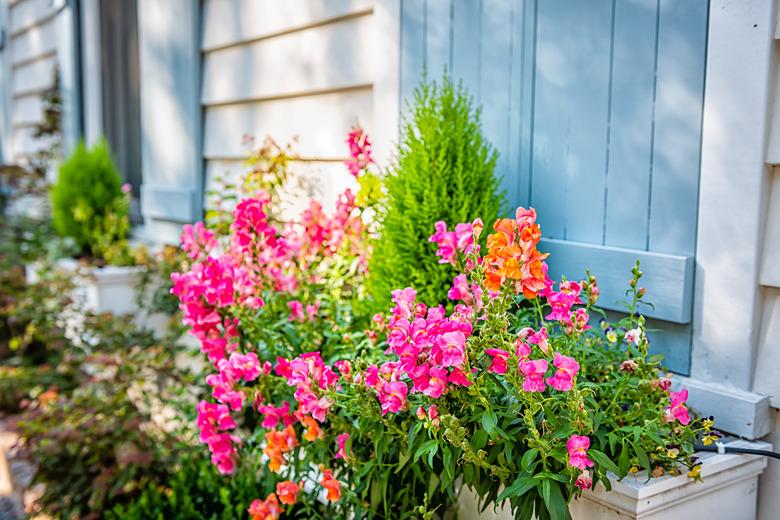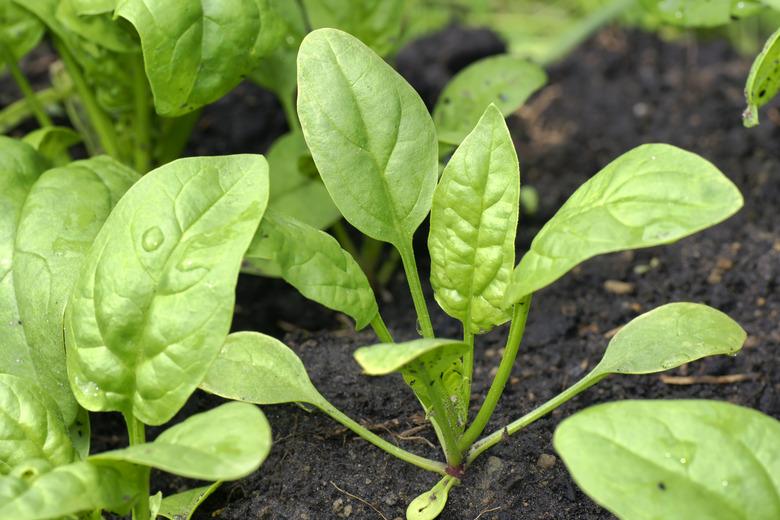11 Best Flowers And Vegetables To Plant In August
August offers the final refrain of summer, leading the year into the cooler weather of autumn and making way for the fall garden. Although a few summer blossoms and warm-season crops are still going strong, many have wilted, leaving plenty of space for cool-weather crops and autumn flowers. If you are wondering what to do in the garden in August, we've got an exciting short-list of planting suggestions.
What to Plant in August
1. Spinach
Spinach is a cold-weather vegetable, meaning it is at its best when it matures in chilly weather. It's a real challenge to grow spinach in summer since it bolts quickly in the heat, but as the days cool a bit in August and chill even more in September and October, spinach can thrive in your vegetable garden. Wait to seed until soil temperatures drop below 65 degrees Fahrenheit — generally later in the month — and then keep the soil moist and mulched. You can continue putting in those seeds right up to the first freeze.
Try planting a varietal like Spinacia oleracea 'Renegade,' known for its sweetness. It shoots up dark green, rounded leaves on compact plants. Leaves mature in 30 days and resist mildew. It grows best in zones 3 through 9. Another option to try is Spinacia oleracea 'Red Kitten.' It is particularly lovely, with bright green leaves and red veins.
Nothing beats beets for fall planting. Beets will thrive almost anywhere in the fall garden, from the Pacific Northwest to the Gulf Coast. If August is hot in your area, select a heat-resistant variety, like Beta vulgaris 'Detroit Dark Red,' a heritage beet that's been a favorite for over a century. The beets are deep crimson, some three inches in diameter, and mature two months after seeding. You can also opt for Beta vulgaris 'Avalanche,' a white beet that is aromatic and full of deep flavor but not quite as sweet as the red varieties. They take 50 days from seeding to maturity.
With summer flowers on the way out in autumn, many gardeners feel a real need to plant something bright and cheerful for the next spring. Why not choose snapdragons for August planting? These easy-to-grow annuals bloom in a wide variety of colors and are cottage garden staples. Plus, they also make gorgeous cut flowers. Sow seeds in August for a snapdragon show that starts in early May.
For bright colors and long-lasting double blooms, try snapdragon variety Antirrhinum majus 'Madame Butterfly.' If you prefer brilliant white flowers, you could plant Antirrhinum majus 'Royal Bride,' with its pure white flowers and rich green foliage. They are beloved by bumblebees, and unlike many varieties, the blossoms have a delicate fragrance. Perennial snapdragons grow best in USDA zones 7 through 9.
Most leafy greens work perfectly for fall gardening, from lettuce to chard to beet greens. Why not introduce something a little different, like arugula — the leafy greens with a kick? Arugula's leaves are called peppery or mustardy, and many love the bite in salads. Arugula is a fall vegetable, and frost typically won't damage it.
For maximum spice, try Diplotaxis tenuifolia (Sylvetta), with long, thin, peppery leaves. For something a little milder, go for Eruca sativa (Apollo), a Dutch heirloom variety. These annuals grow in almost any zone and take 40 to 50 days to mature.
Marigolds are often viewed as summer flowers, but in fact, their prime growing season is late summer up through the first frost. The last weeks of August are the optimal time for buying marigold seeds and planting them in the fall garden. These fast-growing, happy flowers will light up the bed from mid-September through the first hard frost. They are easy to grow and appear in wonderful shades of yellow, orange, and gold.
If you are looking for a taller marigold, consider the Tagetes erecta 'Perfection' variety that reaches 30 inches tall and 15 inches wide. For something shorter, Tagetes erecta 'Marvel' marigolds — in gold, orange, or yellow — grow to 18 inches tall and 10 inches wide.
Salads are good for you and are especially delicious with lettuce straight from the garden. August is an ideal moment for planting this cool-season crop. Easy to grow, lettuce can be seeded throughout the month of August with enough time for fall harvests. Opt for leaf lettuce types over head lettuce since they can be harvested multiple times.
Try baby leaf lettuce mix for a beautiful blend of colors, shapes, and textures. It is ready to eat in 30 days. An heirloom leaf lettuce to try is Lactuca sativa 'Black-Seeded Simpson,' which comes to full maturity in 45 days, but baby greens can be harvested in less than a month after germination.
Diverse dahlias are one of the most beautiful, long-flowering perennials. While dahlia bulbs are usually planted in early spring, August is great for planting potted dahlias that are already in full growth. You can enjoy their glossy petals in dazzling colors and interesting leaves until deep into the fall.
The hardest part about planting these beauties is choosing between varieties since dahlias can be short-stemmed, long-stemmed, and anything in between. These plants don't die back until the first hard frost, and they grow best in United States Department of Agriculture (USDA) hardiness zones 7 through 10.
Kale is a cold-hardy veggie that should be seeded in late summer or early fall. It is exceptionally easy to grow. For the sweetest leaves, plant your kale in August and allow the plants to mature in the chillier fall weather. One heirloom variety to try is Brassica oleracea 'Lacinato.' Seed it in August for a mid-October crop in USDA hardiness zones 3 through 8.
Cornflowers, belonging to a genus of annuals and perennials are grown for their intriguing, thistlelike flower heads. The Centaurea montana are the most popular cultivated species, with purple flower heads encased by a ring of bright blue ray petals.
August is the best time of year to sow cornflowers if you're looking for them to flower in May. Look for the blue-ball variety, like Centaurea montana 'Carnea' for vivid blossoms or Centaurea montana 'Amethyst in the Snow' for deep purple and snowy white flower heads. Cornflowers thrive in USDA plant hardiness zones 2 through 11.
Broccoli is a cool-season crop. This vegetable best develops during the cool seasons of the year. Fall crops can be planted in August and allowed to develop and mature in the cooler weather. For smooth, medium-sized heads of blue-green broccoli, consider growing Brassica oleracea var. italica 'Green Magic,' compact plants that can do well in containers. While regular broccoli is delicious, it's fun to try lesser known varieties, like Brassica oleracea var. italica 'Artwork,' a baby (or stem) broccoli. It yields tender, dark green side shoots with bite-size heads and grows best in USDA zones 3 though 10.
Daffodils are one of the most beloved spring flowers. Like other spring bulb plants, they grow from bulbs planted in late summer or autumn. Though you can wait as late as November to put these in, late August works well in cooler regions. These bulbs only bloom if they overwinter in a cool spot, so plant these in zones 3 through 8.
Which daffodils should you choose? For traditional, butter-yellow flowers, consider Narcissus 'Golden Ducat.' It grows to 12 inches tall and produces double flowers in midspring. If your site is in partial shade, you'll do better with Narcissus 'Petit Four.' It shoots up to 16 inches tall, with white petals with a double cup of apricot pink. Daffodils thrive in USDA zones 3 through 9.











